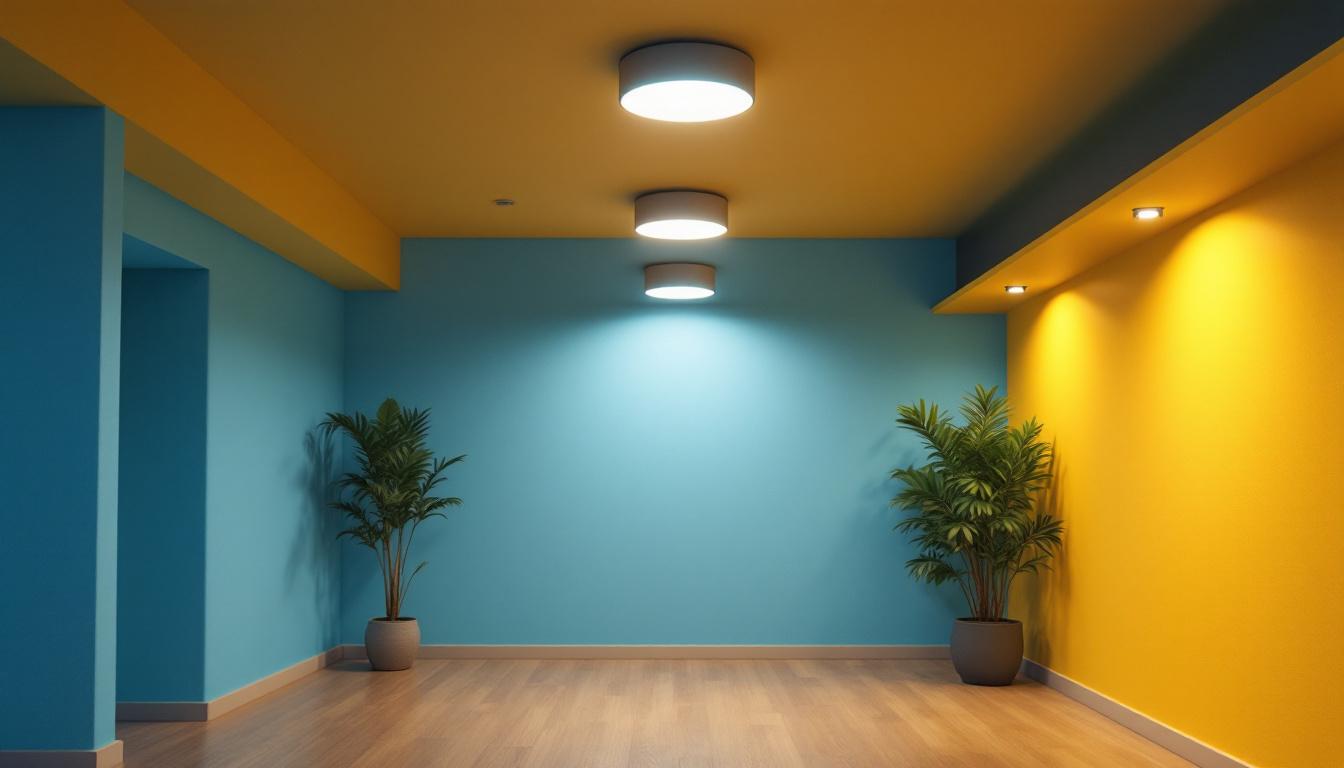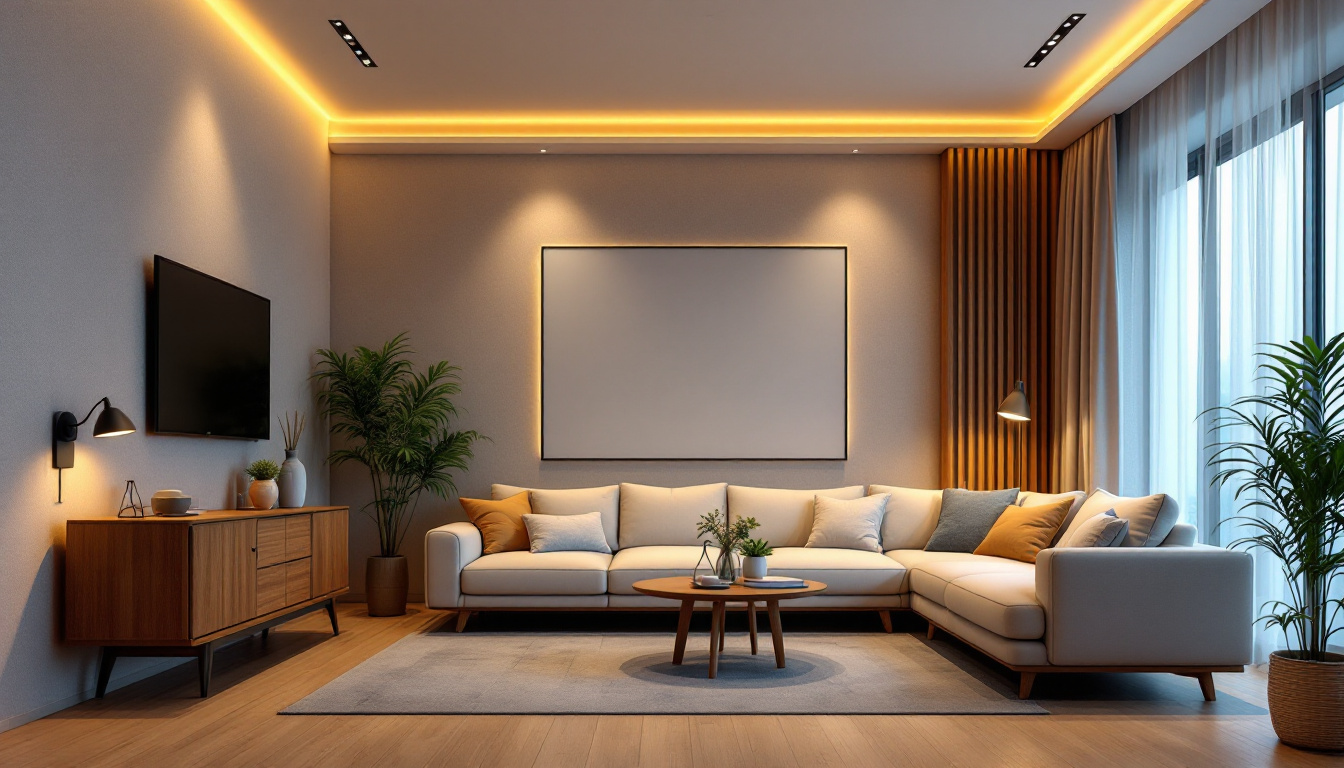
Basements often serve as multifunctional spaces, from storage areas to entertainment rooms. However, one common challenge faced by homeowners and contractors alike is ensuring adequate and energy-efficient lighting. Selecting the right ceiling light fixtures for basements can significantly enhance the usability and ambiance of these spaces. This article delves into the essential aspects of basement ceiling light fixtures, focusing on energy efficiency, design considerations, and installation tips.
In today’s environmentally conscious world, energy efficiency is more than just a trend; it’s a necessity. When it comes to basement lighting, the choice of fixtures can greatly impact energy consumption and costs. Energy-efficient lighting solutions not only reduce electricity bills but also contribute to a lower carbon footprint.
There are several types of energy-efficient lighting options available for basement ceilings. LED lights are among the most popular choices due to their long lifespan and low energy consumption. Compared to traditional incandescent bulbs, LEDs use up to 75% less energy and can last up to 25 times longer. This makes them an excellent choice for areas like basements, where lighting may be used frequently.
Another option is compact fluorescent lamps (CFLs), which also offer significant energy savings. While they may not last as long as LEDs, they are still a more efficient alternative to incandescent bulbs. Understanding these options is crucial for contractors aiming to provide the best solutions for their clients. Additionally, smart lighting technology is emerging as a game-changer in energy efficiency. Smart bulbs can be programmed to turn on and off at specific times or controlled remotely via smartphone apps, allowing homeowners to manage their energy use more effectively and reduce waste.
Choosing energy-efficient fixtures for basement lighting comes with numerous benefits. Firstly, they help in reducing energy bills, allowing homeowners to save money in the long run. Secondly, energy-efficient lighting produces less heat, which can be particularly beneficial in basements that may already have temperature control issues.
Furthermore, many energy-efficient fixtures are designed with advanced technology that allows for better light distribution. This means that fewer fixtures may be needed to achieve the same level of brightness, leading to additional savings on installation and maintenance costs. Beyond financial savings, energy-efficient lighting can enhance the overall aesthetics of a basement. With options available in various color temperatures and styles, homeowners can create a warm, inviting atmosphere that complements their decor while still being eco-friendly. Moreover, the longevity of these fixtures means less frequent replacements, reducing waste and contributing to a more sustainable living environment.
When selecting ceiling light fixtures for basements, aesthetics should not be overlooked. The design of the fixtures can significantly influence the overall look and feel of the space. A well-lit basement can transform a dark, uninviting area into a warm and welcoming environment. Furthermore, the choice of lighting can also enhance the functionality of the basement, making it more versatile for various activities, whether it be a home gym, a cozy movie room, or a vibrant play area for children.
Basement lighting fixtures come in various styles, from modern to traditional. The choice should align with the overall design theme of the home. For instance, recessed lighting offers a sleek, unobtrusive look, making it ideal for contemporary basements. On the other hand, pendant lights can add a touch of elegance and serve as a focal point in the room. When selecting fixtures, consider the scale of the basement; larger spaces may benefit from oversized fixtures that draw the eye upward, creating an illusion of height and spaciousness.
Additionally, consider the color temperature of the fixtures. Warmer tones can create a cozy atmosphere, while cooler tones may be more suitable for workspaces or recreational areas. Understanding the purpose of the basement will guide the selection of the appropriate lighting style and color temperature. For example, if the basement is intended for relaxation, softer, warmer lights can encourage a sense of calm, while brighter, cooler lights can invigorate a space meant for exercise or productivity.
Effective light distribution is crucial in basement spaces, which often have limited natural light. The layout of the fixtures should ensure that light reaches all corners of the room. Using a combination of ambient, task, and accent lighting can help achieve this balance. Ambient lighting provides overall illumination, while task lighting focuses on specific areas, such as workbenches or reading nooks. Accent lighting can highlight architectural features or artwork. Contractors should assess the layout of the basement and recommend a lighting plan that maximizes brightness without creating harsh shadows.
Moreover, incorporating dimmer switches can enhance the versatility of the lighting, allowing homeowners to adjust the brightness according to the time of day or the activity taking place. For instance, a movie night may call for a dimmed ambiance, while a game night might benefit from brighter, more focused light. Additionally, strategically placed mirrors can amplify light and create a brighter, more open feel in the basement, making it an inviting space for both relaxation and entertainment. The thoughtful integration of lighting elements can truly elevate the basement from a mere storage area to a functional and stylish extension of the home.
Proper installation of basement ceiling light fixtures is essential for both functionality and safety. Contractors must adhere to local building codes and regulations while ensuring that the fixtures are installed securely and efficiently.
Before installing light fixtures, it is vital to evaluate the existing electrical system. Basements may have unique wiring challenges, including outdated systems or inadequate circuits. Contractors should ensure that the electrical supply can handle the additional load of new fixtures.
Using LED fixtures can alleviate some of these concerns, as they typically require less power than traditional options. However, it is still essential to check the compatibility of the fixtures with the existing wiring and switches. If necessary, upgrading the electrical system may be required to meet safety standards.
Placement of ceiling fixtures is another critical factor. In basements, where ceiling height may be limited, it is crucial to choose fixtures that do not hang too low. Flush mount or recessed lighting options can help maximize headroom while providing adequate illumination.
Additionally, consider the layout of the basement when determining fixture placement. Fixtures should be evenly spaced to ensure uniform light distribution. Using a lighting plan can help visualize the placement and ensure that all areas are adequately lit.
As technology continues to advance, smart lighting solutions are becoming increasingly popular in residential settings. These systems offer enhanced control and convenience, making them an attractive option for basement lighting.
Smart lighting allows homeowners to control their lighting remotely through smartphones or smart home systems. This capability can be particularly useful in basements, where light switches may be located far from the entrance. Homeowners can turn lights on or off, adjust brightness, and even set schedules from anywhere.
Moreover, smart lighting systems often include features such as motion sensors, which can automatically turn lights on when someone enters the basement. This not only enhances convenience but also contributes to energy savings by ensuring lights are only on when needed.
Integrating smart technology into basement lighting requires careful planning. Contractors should assess the existing electrical infrastructure and determine the best way to incorporate smart fixtures or controls. This may involve installing smart switches, bulbs, or hubs that connect to the home’s Wi-Fi network.
Additionally, educating homeowners about the benefits and operation of smart lighting systems can enhance their experience. Providing guidance on how to set up and customize these systems can lead to greater satisfaction and increased energy efficiency.
When it comes to selecting and installing basement ceiling light fixtures, there are several common mistakes that contractors should be aware of. Avoiding these pitfalls can lead to better results and happier clients.
Many basements have limited natural light, but it is essential to consider any available windows or openings when planning lighting. Over-illuminating a space can lead to a harsh environment, while under-illuminating can create dark corners. Striking the right balance is crucial for creating an inviting atmosphere.
Each basement serves a different purpose, whether it be a recreational area, a home office, or a storage space. Contractors should take the time to understand how the space will be used and recommend fixtures accordingly. For example, a home gym may require brighter, more focused lighting, while a cozy lounge area may benefit from softer, ambient lighting.
Choosing the right basement ceiling light fixtures is a critical aspect of creating an energy-efficient and inviting space. By understanding the importance of energy efficiency, considering design elements, and following proper installation practices, contractors can provide valuable solutions to their clients. Furthermore, integrating smart lighting technology can enhance convenience and control, making basements more functional and enjoyable.
Ultimately, staying informed about the latest trends and technologies in lighting will enable contractors to offer the best advice and solutions for basement lighting projects. With careful planning and consideration, it is possible to transform a dark basement into a bright, welcoming area that meets the needs of homeowners while promoting energy efficiency.
Ready to elevate your basement projects with energy-efficient lighting that combines quality and affordability? Look no further than LumenWholesale. Our extensive selection of spec-grade lighting products is designed to meet your every need, ensuring you deliver exceptional results to your clients. Say goodbye to inflated markups and hello to unbeatable wholesale prices, free shipping, and the convenience of bulk buying. Transform dark basements into bright, welcoming spaces with reliable, high-performance lighting. Discover the best value in wholesale lighting and make your next project shine with LumenWholesale.

Discover the ultimate guide to Gooseneck Brass Sconces with expert tips tailored for lighting contractors.

Discover the top choices in recessed lighting with our comprehensive guide tailored for lighting contractors.

Discover how LED light bulbs are revolutionizing the lighting industry by seamlessly integrating into fluorescent fixtures.

Discover the top strategies lighting contractors use to maximize the efficiency and aesthetics of spaces with recessed dimmable LED downlights.